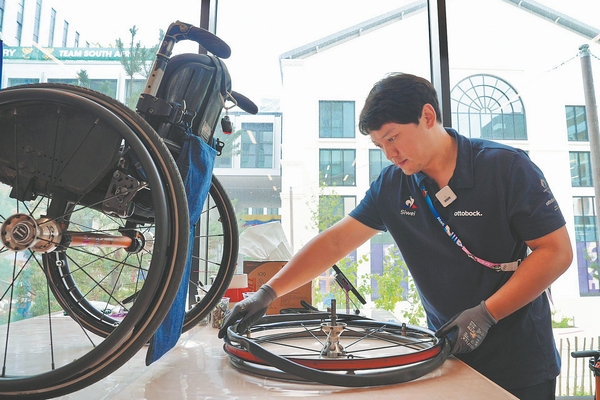

The smallest issues can have a major impact. "On the field, athletes rely on their devices to compete. Off the field, these devices help them live comfortably and move freely in the Paralympic Village," Zhu says.
At the assistive device repair center in the Paralympic Village, Zhu spent most of his time working. All the technicians there were invited by Ottobock, an international medical technology company.
According to Jennifer Duke, a staff member of Ottobock who worked at the front desk of the repair center, there were about 180 technicians from across the globe including China, Canada, France, and the Netherlands. "They work in early and late shifts at the Paralympic Village and the competition venues," she explains.
During the Paris Paralympics, the team of prosthetists, orthotists, wheelchair specialists, and other technicians completed around 2,700 repairs — a higher demand than ever before at the Paralympics. About 55 percent of those repairs were on wheelchairs.
In addition to wheelchair repairs, athletes and officials with disabilities could also have their prostheses and other assistive devices fixed. They would first visit the front desk to describe their needs, and the staff would assign a technician accordingly.
During the Paralympics, he recalls fixing a wheelchair for a Ukrainian athlete. "It wasn't a major problem," Zhu says. "When he sat down, the side panel would brush against the wheel, making it uncomfortable to use."
Zhu's fix was straightforward: He added spacers to the inside of the wheel, pushing it slightly outward so it no longer rubbed against the panel. He and the athlete went through several rounds of adjustments to find the perfect balance.